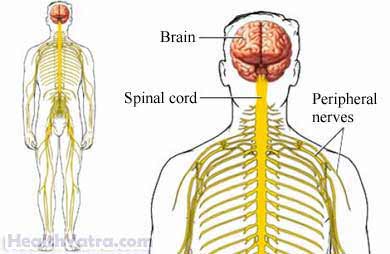تعريف
Phantom limb syndrome is the perception of sensations, usually including pain, in a limb that has been amputated. Patients with this condition experience the limb as if it were still attached to their body as the brain continues to receive messages from nerves that originally carried impulses from the missing limb.

أسباب
The exact cause of of phantom limb syndrome is unknown. Presumably, the sensations are due to the brain’s attempt to reorganize sensory information following the amputation. The brain must essentially “rewire itself” to adjust to the body change.
عوامل الخطر
The following factors increase the chance of developing phantom limb syndrome:
- Preamputation pain. If there was pain in the limb before it was removed, a patient is more likely to experience phantom pain afterward.
- Blood clot in the amputated limb.
- Infection in the limb before amputation.
- Previous damage to spinal cord or peripheral nerves that supplied the affected limb.
- Adults more commonly than children.
الأعراض
Symptoms occur in people who have had a limb removed and people who are born without a limb. The symptoms are perceived in a limb that does not exist.
تشمل الأعراض ما يلي:
- Pain (by far the most common)
- Pleasure
- Sensation of an article of clothing or jewelry
- Sensation that the limb is still attached and functioning normally
التشخيص
Following an amputation, it is important to tell your doctor if you experience pain or other sensations. Earlier treatment generally improves the chances of success.
There is no medical test to diagnose phantom pain. Your doctor will take a medical history, do a physical exam, and especially want to know about the signs, symptoms, and circumstances that occurred before and after the removal of the limb.
العلاج
Fortunately, most cases of phantom limb following amputation are brief and infrequent. For those patients who suffer from persistent pain, treatment can be challenging.
الأدوية
Selected medications used to treat phantom limb pain include:
- Antidepressants—usually treat depression, but may be helpful in phantom limb pain at lower doses.
- Anticonvulsants—usually control seizures, but may also be helpful here.
- Chlorpromazine—usually treats schizophrenia, but may also be helpful here.
- Opioids—are powerful pain killers (eg, morphine).
- Clonidine—usually treats high blood pressure, but is helpful with pain generated in the brain.
- Baclofen—muscle relaxant and used to treat nerve damage pain.
Electrical Nerve Stimulation
In some cases, electrical nerve stimulation may be used. Examples include:
- Transcutaneous electrical nerve stimulation (TENS)—a tiny electric current is sent through the skin to points on the nerve pathway
- Transcranial magnetic stimulation—a strong magnetic pulse is sent through the scalp into the brain
- Spinal cord stimulation—an electrode is inserted and a small electric current is delivered to the spinal cord to relieve pain
Other Approaches
- Regional sympathectomy—a surgical procedure that interrupts selected nerves near the spinal cord affecting the perception of localized pain
- Meditation and relaxation techniques
- Biofeedback
- التنويم المغناطيسى
- العلاج بالإبر
- تدليك
- Exercise
الوقاية
To help reduce your chances of getting phantom limb syndrome, some believe that administering pain medication at the time of the amputation may prevent persistent pain afterward. The effectiveness of this approach has yet to be confirmed.
